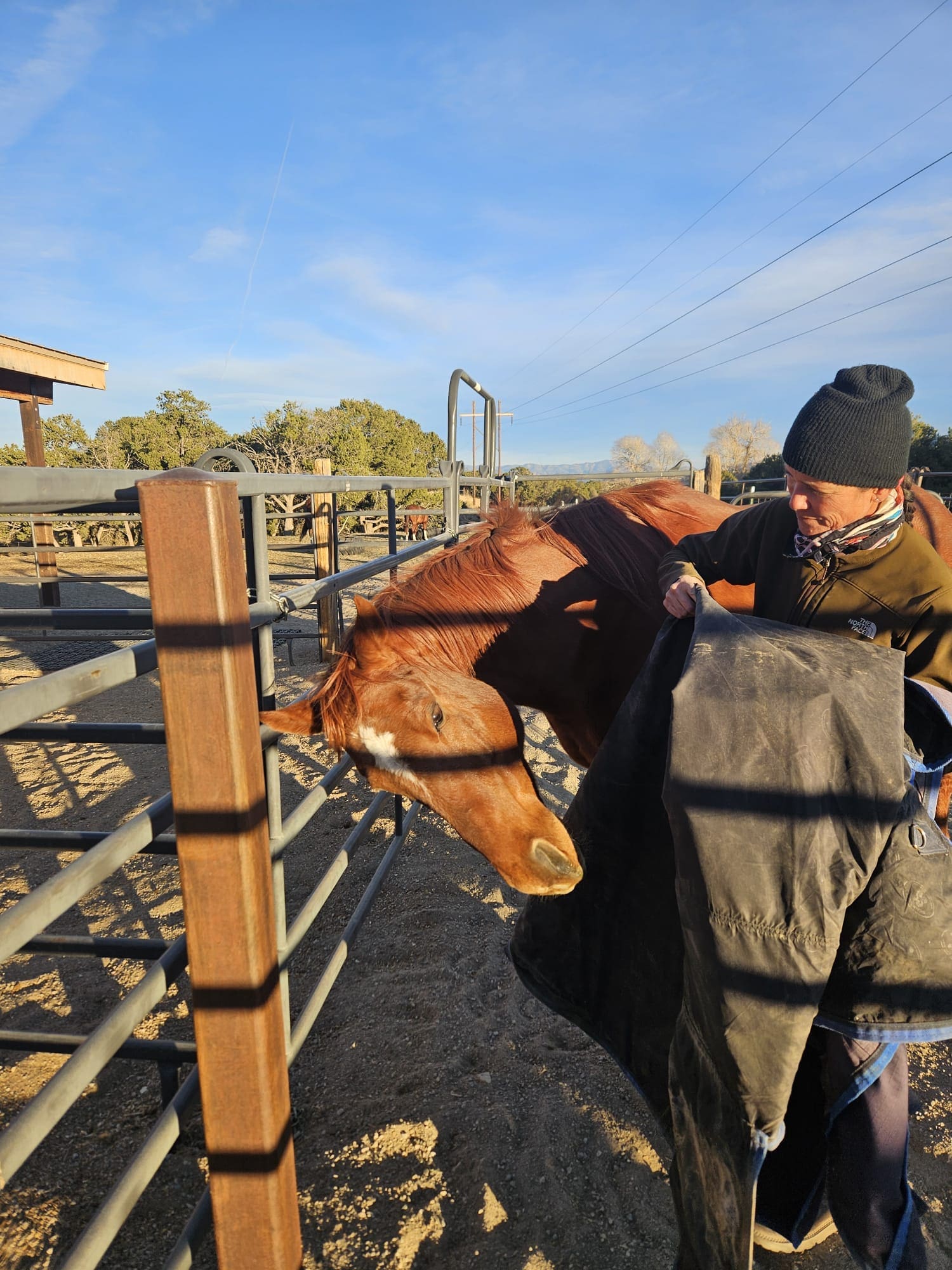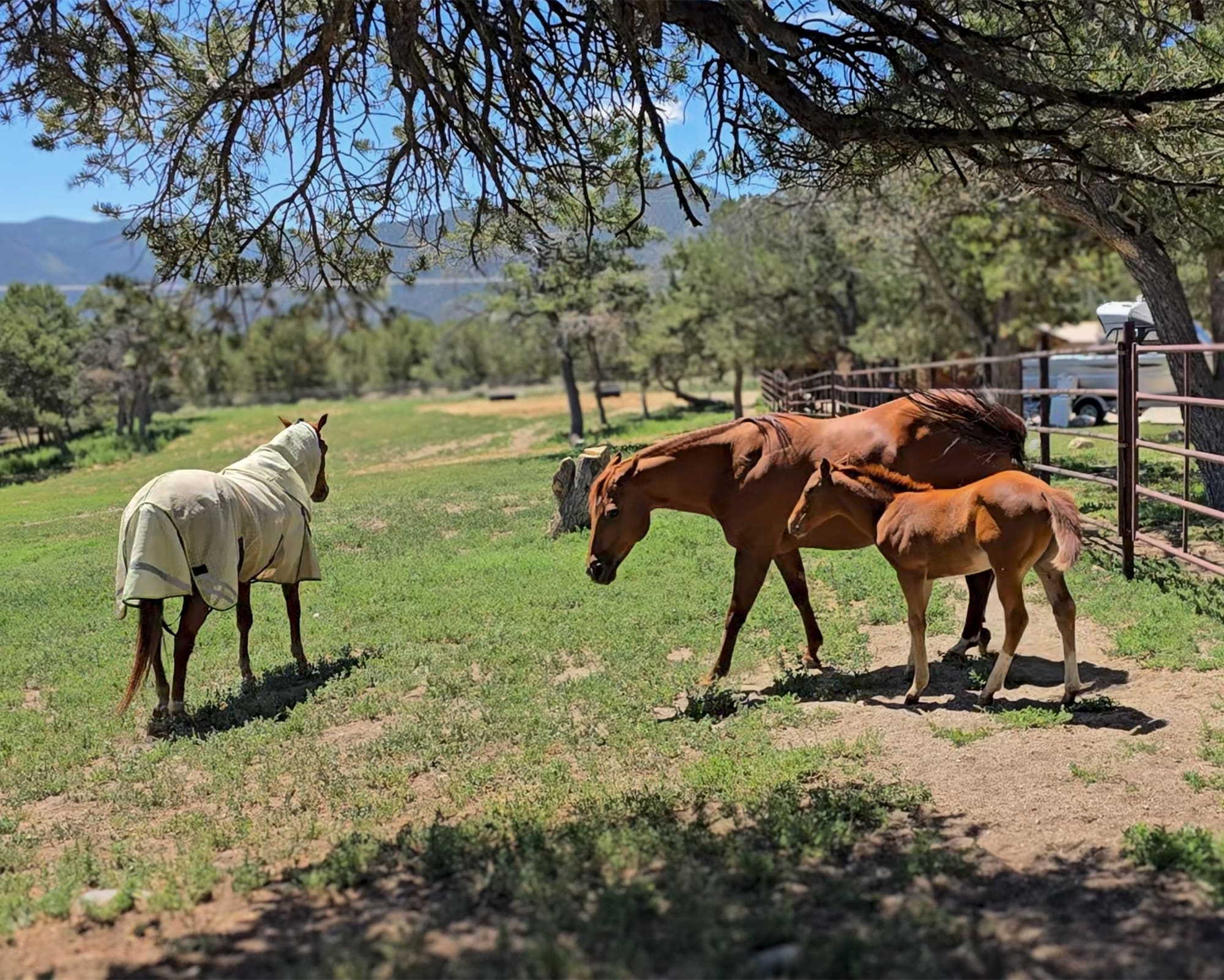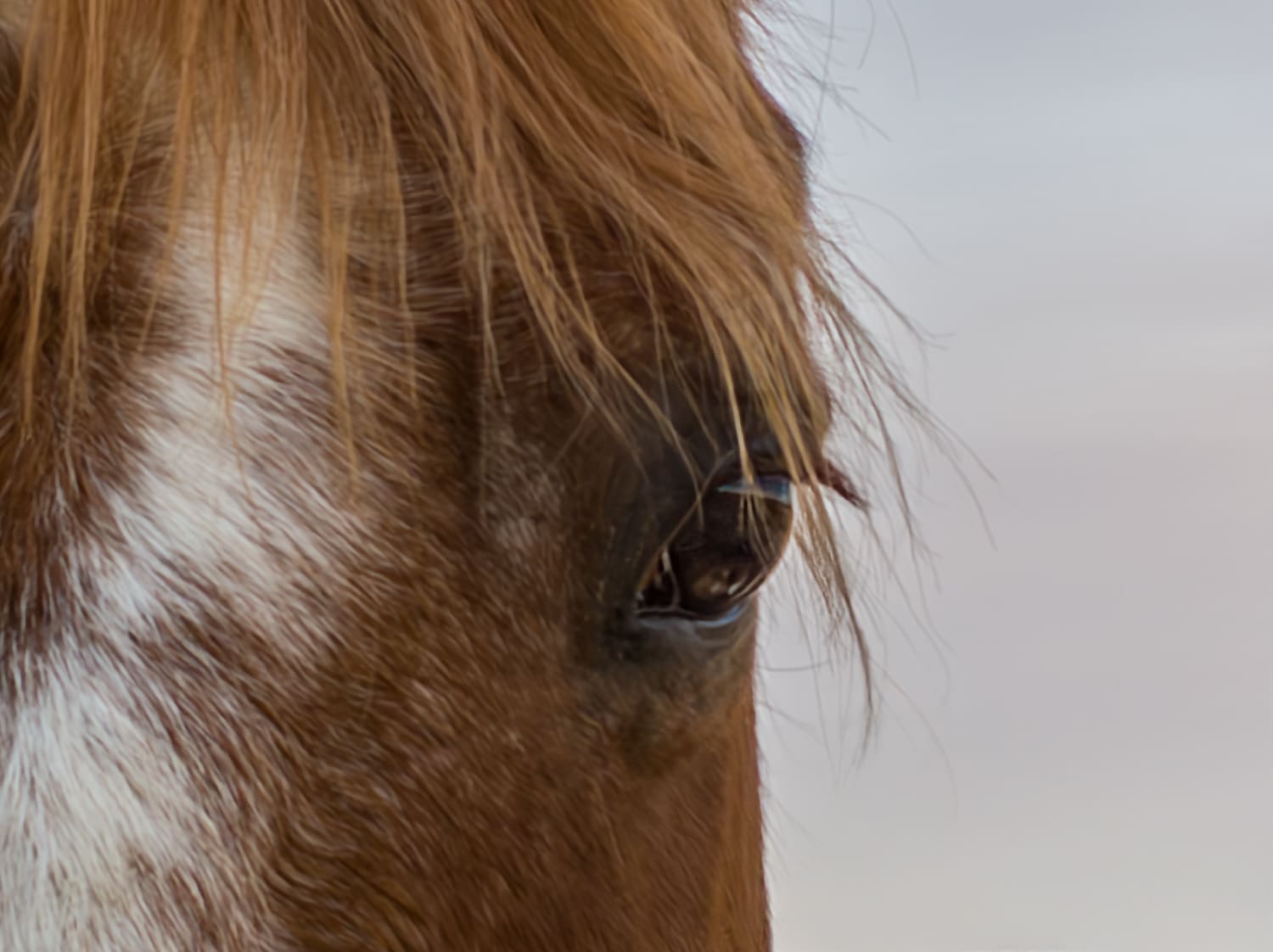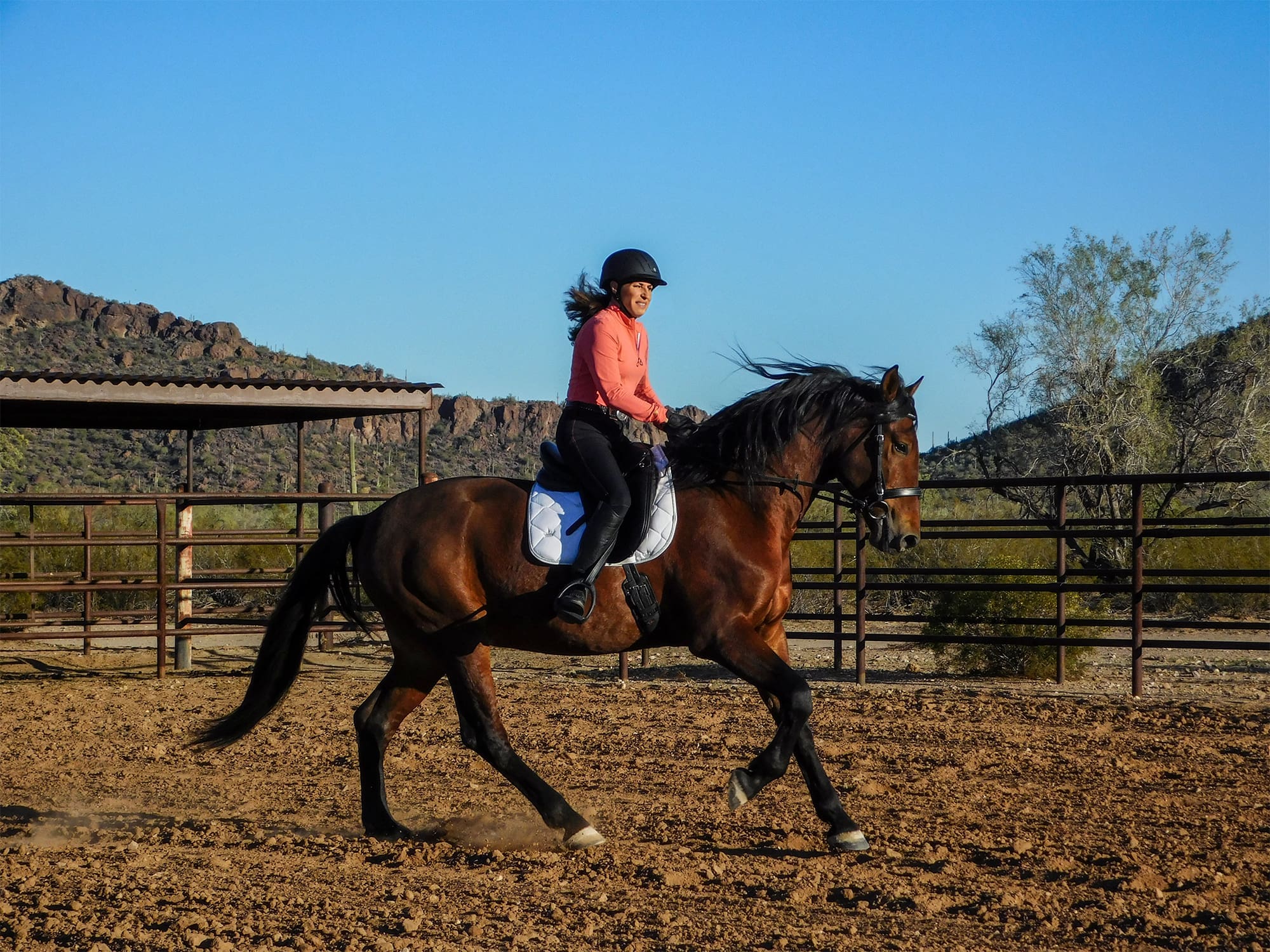
I am happy to report that my plans for breeding Annie this year are well underway! So far (*knock on wood*) everything is going according to plan. Annie hasn’t figured out what’s in store for her yet, but I know it’s her life’s ambition to have a foal. If you ever saw the way she reacts to foals, you’d immediately understand.
To date, I have fully executed a breeding contract with the 6666 Ranch (commonly called “The Four Sixes”). The stallion I have purchased a breeding to is Bet Hesa Cat, a red roan cow horse. The pedigrees of the two horses match up very well, and I’ve been up close and personal with this stallion. I was very drawn to his small stature, his excellent conformation, and the cherry-on-top is his mellow and stellar temperament. Here’s a picture of Cat and me in his stall about six years ago.

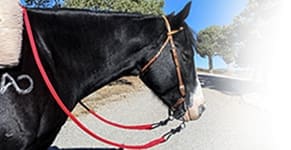
*Brand New* Red Rope Reins & Leads | Complete the Collection!
I’ve also signed a veterinary mare breeding services agreement with Dr. Richard Marrott, from Elite Equine Veterinary Services. We have used Elite Equine for all our vet care for years. They specialize in performance horses, and I am so thankful they also have a repro vet, Dr. Marrott, and a breeding clinic where Annie will go when it’s time to breed her (artificial insemination with cooled semen).
In an effort to encourage Annie to come into heat and start ovulating early, I moved her into the foaling stall in our barn, which has lights on a timer. This way, we can emulate the amount of daylight that she would be getting in the spring. Once the days get longer (and darkness only lasts for 8 hours), it stimulates both shedding and ovulation. So, putting her under lights now will help her start cycling sooner. Sunset for Annie happens about 9 pm now.
When she comes into heat, we will take her for her pre-breeding exam, and will be able to calendar the potential dates she might be bred. If everything continues according to plan, we should be able to breed her in April.
Surprisingly, when we moved Annie from the fourth stall in my barn to the second stall (the foaling stall), although still next to her buddy horse, she got a little depressed/puny (what I call ‘the vapors’). We immediately put her on ulcer medication (which she normally only takes when we travel) and she snapped right out of it.
This is an important reminder that most horses are prone to ulcers, and even the slightest change in their existence can cause a flare-up. Changes in herd dynamics are some of the biggest culprits. I always keep ulcer meds on-hand, and we are very proactive in administering it. Of course, this is all under the supervision (and prescription) of our fantastic veterinarians at Elite Equine.
I am very happy with Annie’s current physical condition. Ideally, a mare is thinner at the end of winter and as the nutrition naturally increases in the Spring, it helps cue the body for ovulation. It’s the natural order of things, and if a mare is overweight in the winter, she may be difficult to settle (get pregnant).
Right now, Annie is as fit as she’s been in years. Coming into the breeding season in top-rate condition will not only help get her settled, it will also help her snap back to her girlish figure after the baby is born. I have to believe it will help her safely and comfortably carry the baby, too.
We’re on step 3 of “Horse Goals or Bust!” this month, and the focus is on assessing the current fitness of horse and rider, and developing a conditioning plan to help you reach your goal. I’m happy to report that Annie did VERY well on the test. With a resting heart rate of 24, her numbers validate what I see in front of me—a sweet little mare, fit as a fiddle and ready for the next fun chapter in her life!

